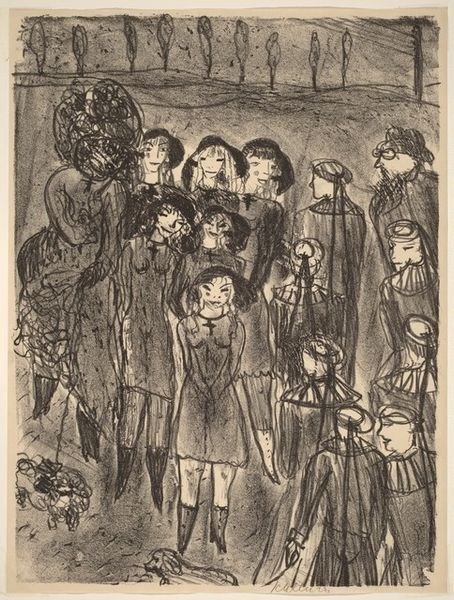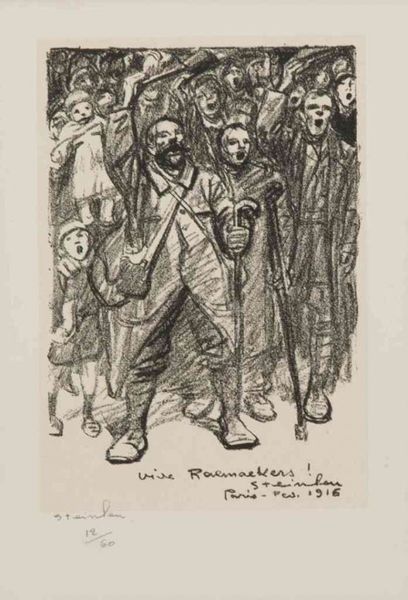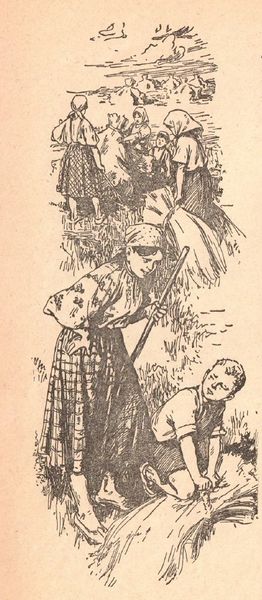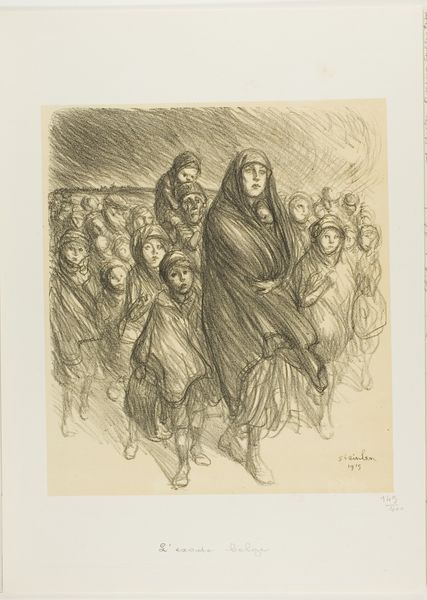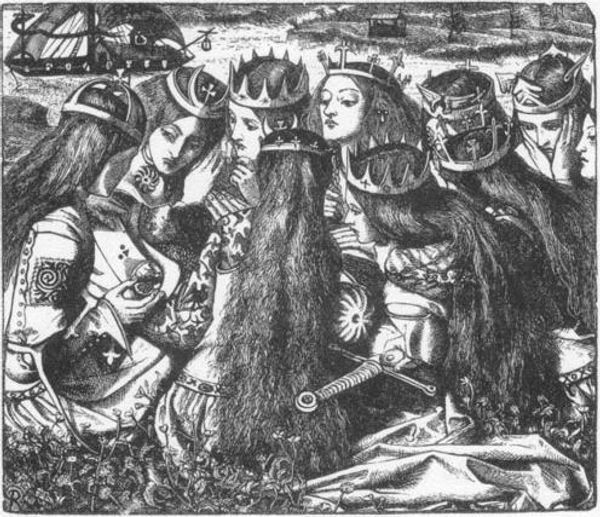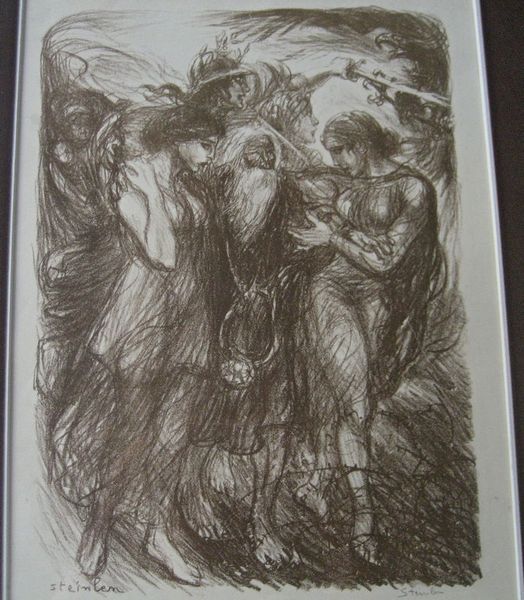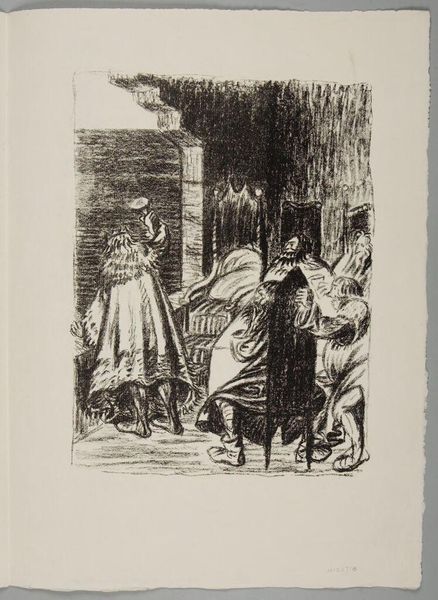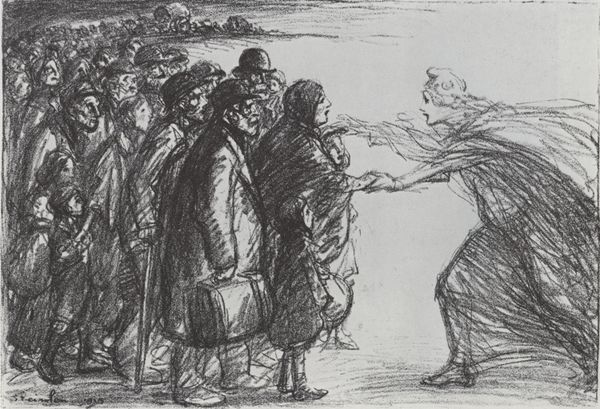
Copyright: Public domain
Editor: This ink drawing is entitled "Exode," by Théophile Alexandre Steinlen, created in 1915. The composition really hits you – a mass of figures all pressed together. It's quite unsettling. What strikes you most about this piece? Curator: The visual density definitely speaks volumes. Consider what the symbol of a mass of people suggests—loss of individuality, perhaps shared grief, or maybe a pilgrimage. What details draw your eye first within the crowd? Editor: I'm drawn to the faces; they're all so expressive, filled with a kind of fear or desperation. It makes me wonder, what kind of cultural anxieties are reflected in this image? Curator: The date, 1915, is crucial. World War I was raging. Could this be a depiction of refugees? Consider the historical weight of exodus narratives, especially in times of conflict and upheaval. How might Steinlen be tapping into collective memory through this imagery? Editor: That makes so much sense! The huddled masses really emphasize their vulnerability and shared plight. Did Steinlen often explore themes of social upheaval? Curator: Yes, he was known for socially conscious art. Think about the visual vocabulary used here - the dark inks, the crowded composition - and how these elements contribute to a sense of unease. Is there any suggestion of hope here, or only despair? Editor: I see now how all the visual cues reinforce the theme of displacement. I think I was initially overwhelmed by the darkness, but now I appreciate how Steinlen uses imagery to tell a story about a society grappling with a tragic historical event. Curator: Precisely. By understanding the visual symbols and historical context, we can interpret the depth of Steinlen’s message about the psychological impact of war on ordinary people.
Comments
No comments
Be the first to comment and join the conversation on the ultimate creative platform.
